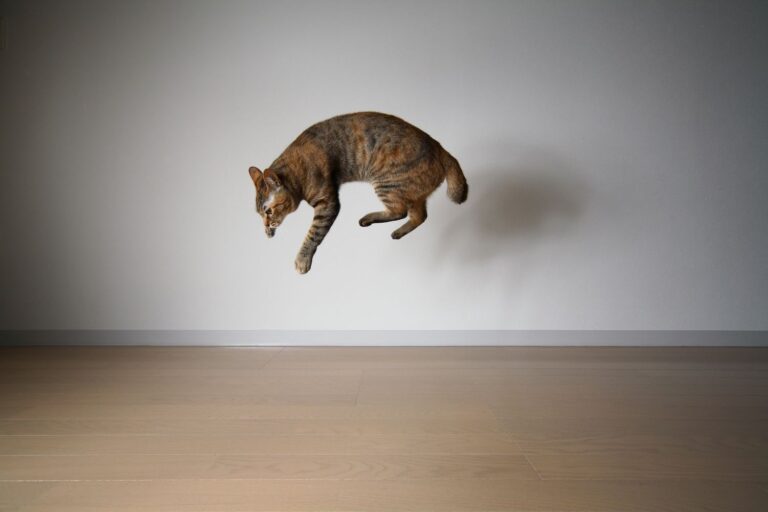Have you ever watched in amazement as a cat effortlessly twists mid-air to land on its feet after a fall? It’s like a surprise ending to an acrobatic display that never ceases to astonish. But is this ability a guaranteed feat for our feline friends or is there more explosive science behind it? In this article, we’ll leap into the physics and biology that enable cats to often land upright, and explore the truth behind this fascinating phenomenon.
It’s a question that’s sparked curiosity for ages: Do cats always land on their feet? While it may seem like a superpower, there’s a lot of biology at play. Cats are equipped with a unique righting reflex, which they use to reorient their bodies during a fall. This reflex is so reliable that it has become a part of feline legend. But, as we’ll see, even the most agile of creatures have their limits. We’ll delve into the scenarios where a cat’s agility may not suffice and discuss why certain falls can still be dangerous. So, let’s get ready to unravel the secrets behind a cat’s remarkable landing prowess and separate the myths from the facts.
Cat’s Righting Reflex Explained

The sequence is explosive, yet graceful. First, a cat will position its head correctly, followed by the spine twisting and the alignment of the rear body to match the front. This action is so surprisingly swift that it often goes unnoticed by the human eye. But, it’s not just about bending and twisting; a cat’s unique skeletal structure, with no collarbone and a loose spine, allows for these acrobatic maneuvers. Are you surprised yet? You should be, because what’s even more astonishing is that kittens as young as three to four weeks old can exhibit this reflex. It’s truly an explosion of nature’s ingenuity!
- Vestibular apparatus: Key to sensing orientation
- Twisting of the spine: Essential for mid-air reorientation
- Loose spine and absence of a collarbone: Anatomical features that aid flexibility
- Righting reflex: Innate ability, present even in young kittens
The Limits of Feline Agility

While cats are known for their incredible agility and balance, it’s important to recognize that they’re not invincible. Have you ever wondered if there’s a height from which even a cat can’t land safely? Or if age plays a role in their acrobatic prowess? Let’s dive into the scenarios where a cat’s agility might not be enough to ensure a safe landing.
Firstly, the height of a fall matters. There’s something called the “safe height range” for cats. Falls from low heights don’t give them enough time to twist their bodies and falls from very high places can lead to serious injuries despite their righting ability. And yes, age and health are significant factors too. Kittens and senior cats might lack the strength or coordination to pull off a perfect landing. Moreover, overweight cats may struggle due to the extra force during the fall, affecting their agility.
But let’s not forget about external factors. Slippery surfaces, unexpected obstacles, or even being startled mid-jump can throw off a cat’s balance. It’s a complex interplay of physics and feline finesse, and sometimes, even the most agile cat can be caught off guard. So next time your furry friend takes a leap, remember that while they’re built for this, they’re not super-cats!
Learn about the anatomical features that contribute to a cat’s balance and flexibility, aiding their landing ability.
Debunking common myths about cats’ landing abilities and discussing what science says about their nine lives.
The Role of Flexibility and Balance

But it’s not just their spine that gives them this superpower. Cats also have a vestibular apparatus in their inner ear, which acts like a built-in gyroscope to help maintain their balance. Think of it as their own internal balancing tool that helps them determine up from down and land on their paws. This, combined with their sharp claws and powerful leg muscles, allows for precise control during a leap or fall. So, next time you see a cat slink away unscathed after a daring jump, remember, it’s all about the incredible synergy of flexibility and balance.
Myths and Misconceptions
Do cats really have nine lives? That’s one of the most endearing myths about our feline friends. While it’s a charming notion, the reality is that cats are as mortal as any other creature. This myth likely stems from their incredible survival skills and their knack for escaping precarious situations. But let’s not let their agility and reflexes create false security; they need protection from high falls just like any other pet.
Another common misconception is that cats can survive any fall, regardless of height. This isn’t true. Cats do have a remarkable righting reflex, which allows them to twist their bodies in mid-air to land on their feet, but this doesn’t guarantee they won’t get injured. Falls from higher places can still cause serious harm or even be fatal. It’s crucial to ensure that windows and balconies are secure to prevent such accidents. Remember, while cats are surprisingly resilient, they’re not invincible!
